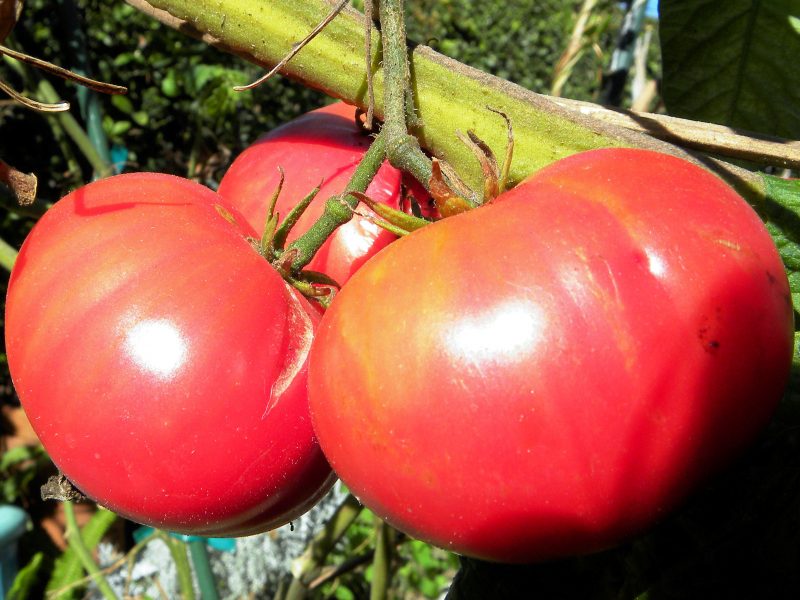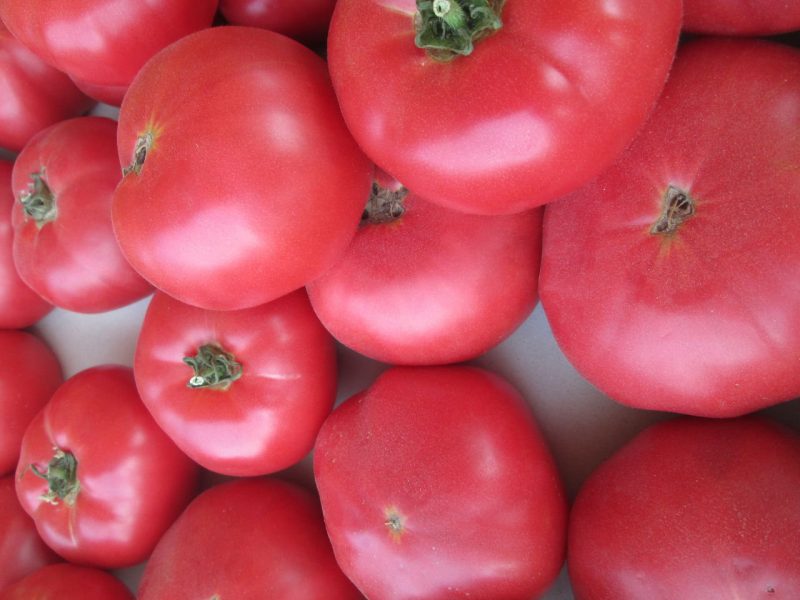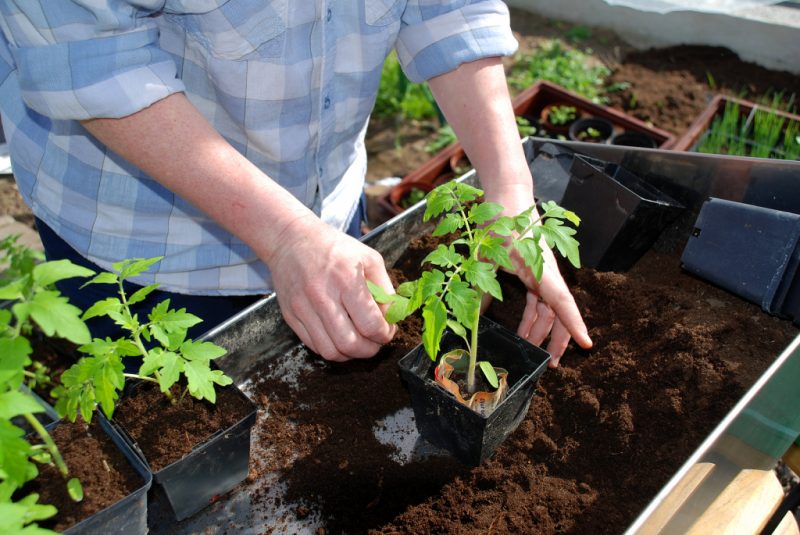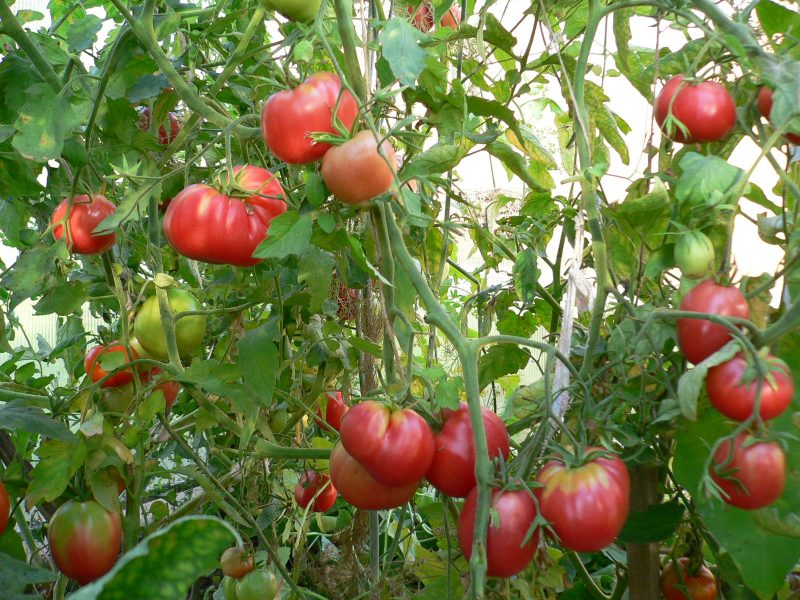The most popular vegetables are tomatoes. Summer residents carefully nurture seedlings, carefully look after greenhouse plants, and then harvest a good crop. That is why breeders every year supply to the market more and more new varieties, and sometimes it is difficult to sort out such a variety. Therefore, this article will discuss the variety of wild rose tomatoes.
Material Content:
Tomato Wild Rose: characteristics and description of the variety
Wild Rose tomatoes are pink varieties.

The variety description says that:
- variety with good yield. From one bush you can collect about 5 kg of large fruits, or even more;
- ripening period 112 - 120 days after seeds are sown;
- the stem grows unlimitedly, therefore it is necessary to pinch it;
- the weight of tomatoes can reach 350 g;
- the pulp is juicy, the taste is sweetish.
Advantages and disadvantages
The advantages include the following qualities:
- the variety tolerates drought and hot weather;
- not picky about the soil;
- the fruits tolerate transportation well;
- can be grown both in a greenhouse and in open ground;
- responds well to temperature changes;
- the fruits ripen perfectly at home.
Among the shortcomings, one:
- the stalk needs a garter, and the branches need support, because it grows quickly, and sometimes does not withstand the mass of ripening fruits.
Origin of the variety

In 1998, the variety was bred by Russian breeders.
Features of growing tomato Wild Rose
Since the variety requires mandatory garters, it is worth thinking about the preparation of props immediately after planting the seedlings, and about the place of planting in advance. Tie up the plant immediately after planting in the ground. Moreover, the support under these tomatoes should be strong and high, since the stem needs to be attached as it grows, up to the place of pinching.
How to grow seedlings

Difficulties with planting seedlings usually do not arise.
- In order for tomatoes to sprout together for seedlings, it is best to use a special mixture and add vermiculite to it.
- First, seeds must be placed in a disinfecting solution for 4 hours.
- A layer of drainage is poured into the planting container, and then a layer of soil.
- The depth of the landing hole is about 0.5 cm.
- Seeds are placed with the pointed end down and sprinkled on top with dry soil.
- After that, watering should be carried out from the spray gun. Spray water until the entire surface is wet. The use of this method of irrigation is necessary so that the seed does not settle deeper with the stream of water.
- Tighten the planting packaging with a film and put in a warm sunny place.
- Ventilate mini-greenhouses several times a day.
- Spray the soil as soon as it dries.
- After the sprouts appeared, do not rush to remove the protective film. You just need to increase the frequency of airing.
- A pick can be made when the first two true leaves appear.
- After the seedlings will be placed in new pots, you need to fertilize with mineral fertilizers.
It is important to remember about the garter of the stem and, with this calculation, choose flower and seedling boxes.
Planting seedlings in open ground
After the seedlings have grown stronger and the threat of frost has passed, seedlings can be transferred to the open ground if it is not intended to grow them in a greenhouse.

Important notice! If this type of cultivation is planned, then the seedlings must be hardened as follows.
- Film shelter from seedlings is removed a week after the first sprouts hatch.
- Seedlings before transplanting to beds should be carried out for five to six days at least five hours in the open air.
- In the first week after transplanting plants at night should be covered.
It is also important to properly prepare the soil.
- In the garden per 1 square. m make 10 liters of rotted cow manure, 5 liters of compost, 2 liters of bird rotted manure, 5 liters of fine sand.
- The soil should be loosened and disinfected with high quality. That is, it must be digged well and shed with a solution of potassium permanganate or biofungicides.
After preparing the ridge, several days must pass before the seedlings are planted, so that the soil has time to ripen.

- Tomatoes are planted at a distance of 65 cm from each other. If planted more densely, then this will significantly reduce productivity.
- After transplanting, it is necessary to pinch the extra shoots, leaving one or two main.
- Before planting, about one tbsp should be poured into each hole. l ash.
- Tomatoes need to be well watered after planting, adding mineral fertilizers is not out of place.
- After planting, mulch the top layer.
Tomato Care Wild Rose
Since the fruiting of the variety is high, it needs tireless attention and careful care. Moreover, it has its own characteristics when grown in open ground and in greenhouse maintenance.
Features of outdoor cultivation
Growing tomatoes immediately in the open ground, possibly in regions where the cold recedes in early April, for other latitudes this method may be detrimental to young shoots of tomato.

- only strong and healthy plants are transplanted into the open ground;
- in the open ground, in addition to forced irrigation, there is also natural, and care must be taken to ensure that moisture is not in excess. If it rains heavily, then the tomatoes should be covered, otherwise the fruits will be watery, and black rot can hit the root system.
In the greenhouse
For the Russian climate, it is still preferable to grow such crops in greenhouse conditions, even if the varieties are frost-resistant, because then the plant will direct all its energy not to survival, but to fruiting.
- in the greenhouse, in addition to the doors, there should be air vents so that you can ventilate in hot weather. It is important to place the vents under the ceiling so that the plants are not in a draft;
- watering is done as the top layer dries;
- be sure to loosen the beds;
- to pinch the extra and lower branches so that they do not interfere with the ripening of the fruits;
- if several large fruits ripen on the branches at once, then they must be removed for further ripening at home.
Pest and Disease Control
When breeding this variety, breeders paid special attention to the fact that the plant could withstand diseases and pests.

But preventive measures should still be followed.
- Every year in the greenhouse you need to change most of the soil.
- Racks, walls, the material from which the walls of the beds are made, must be wiped with disinfecting solutions and, if necessary, fumigated in the fall to reduce the number of parasites hiding in the greenhouse.
- Also, the walls of the greenhouse can be washed with soap-soda solution, this is a good antimicrobial agent.
- If mold appears on the wooden parts, such wooden parts must be replaced, or the mold must be cleaned, treated with anti-mold compounds or burned with a gas burner.
- You can’t use last year’s foliage in greenhouses as organic fertilizer, maybe there are a lot of pests.
- Mulching the beds helps to avoid slug attacks.
The tomato variety "Wild Rose" has been repeatedly celebrated at agricultural and amateur exhibitions.












